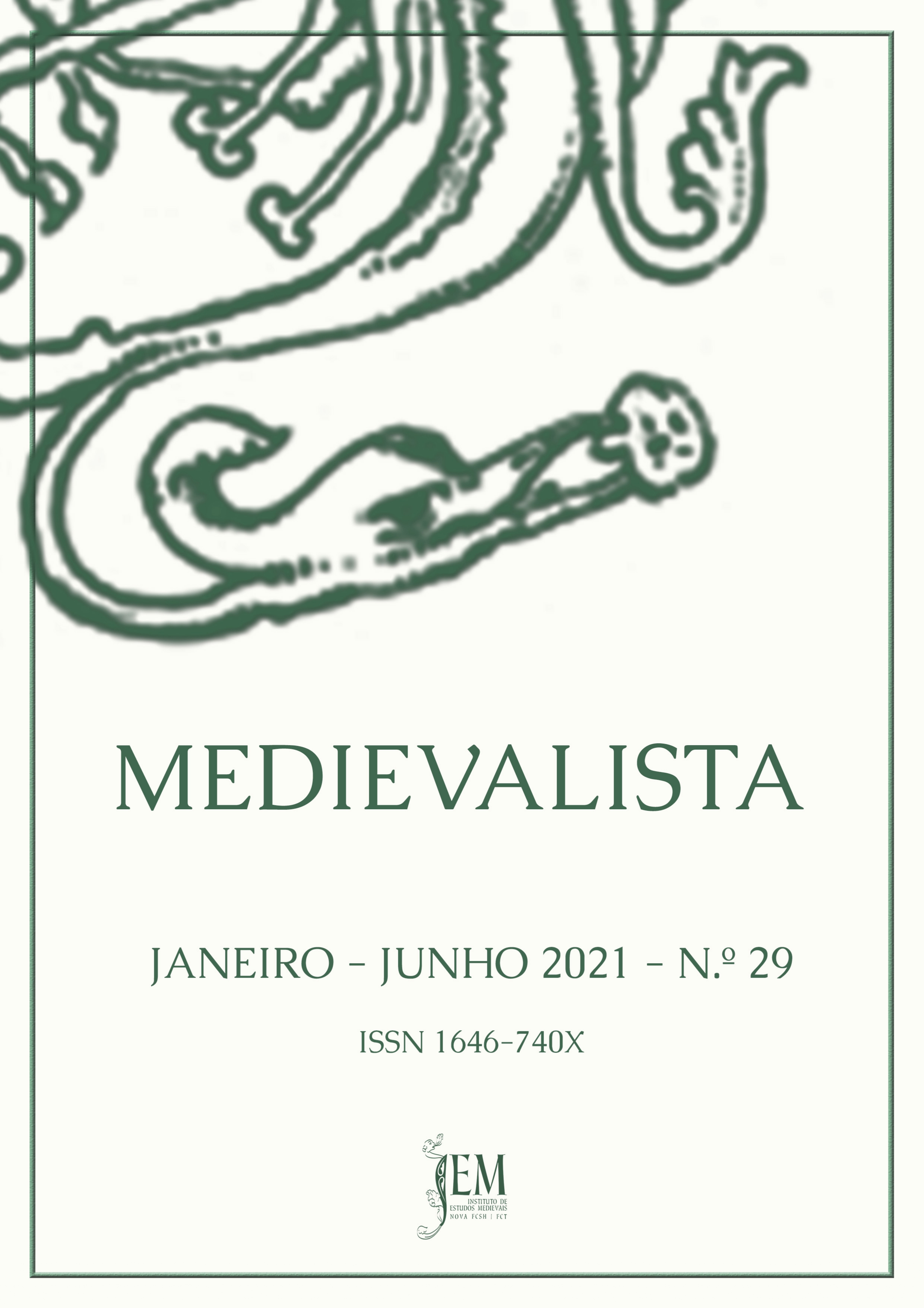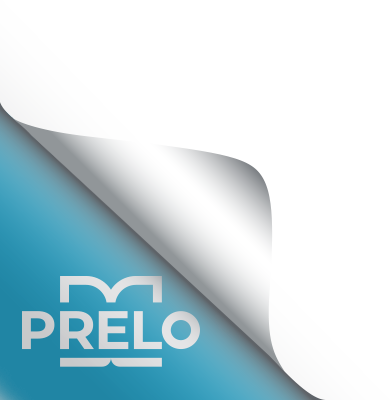Medieval Naturalia: Identification, Iconography, and Iconology of Natural Objects in the Late Middle Ages
DOI:
https://doi.org/10.4000/medievalista.3902Palavras-chave:
Naturalia, Exótica, Animais, Unicórnio, TesourosResumo
A era global nascente no final da Idade Média introduziu objetos exóticos de terras distantes na Europa Ocidental. Os objectos exóticos do mundo natural – naturalia – foram frequentemente modelados em artefactos eclesiásticos e senhoriais e guardados em tesouros. Não raras vezes, esses materiais eram renomeados no novo contexto – como presas de narval, entendidas como chifres de unicórnio – recebendo significados adicionais associados a criaturas míticas alegóricas. Este artigo investiga o movimento, alteração e uso de naturalia renomeada, no contexto da sociedade do final da Idade Média. Foca-se em objectos que mantiveram as respectivas características morfológicas distintivas depois do seu funcionamento, a partir da hipótese de que a identidade do animal, indexada a partir de uma forma reconhecível ou conjunto de características físicas, era importante. Além disso, serão ainda consideradas as conotações simbólicas e propriedades ocultas decorrentes da alegorização da matéria para estudar o papel desempenhado pela ornamentação de naturalia. Este texto explora o discurso entre objetos tangíveis existentes e textos contemporâneos, como bestiários, lapidários e compêndios alquímicos, para examinar como a iconografia da forma do artecfato e a iconologia da ornamentação contribuíram para a significação geral de naturalia.
Referências bibliográficas
Fontes
MAGNUS, Albertus – On Animals: A Medieval Summa Zoologica. Translated and annotated by Kenneth F. Kitchell Jr. and Irven Michael Resnick. Volume 1. Baltimore and London: The Johns Hopkins University Press, 1999.
THEOPHILUS – On Divers Arts. Translated by John Hawthorne and Cyril Stanley Smith. New York: Dover Publications, 1979.
Estudos
AINSWORTH, Thomas – “Form vs. Matter”. The Stanford Encyclopedia of Philosophy [Online]. Spring 2016. ZELTA, Edward N. (Ed.) [Accessed 7 February 2018]. Available at https://plato.stanford.edu/archives/spr2016/entries/form-matter/.
BENTON, Janetta Rebold – The Medieval Menagerie: Animals in the Art of the Middle Ages. New York: Abbeville Press, 1992.
BOEHM, Barbara Drake; HOLCOMB, Melanie – “Animals in Medieval Art”. in Heilbrunn Timeline of Art History. [Online]. New York: The Metropolitan Museum of Art, 2000-, last edited January 2012. [Accessed 14 March 2018]. Available at http://www.metmuseum.org/toah/hd/best/hd_best.htm.
BONNE, Jean-Claude – “De l’ornement dans l’art médiéval: VIIe–XIIe siècle; le modèle insulaire”. in BASCHET, Jérôme; SCHMITT, Jean-Claude (Eds.) – L’image: fonctions et usages des images dans l’Occident médiéval; actes du 6e International Workshop on Medieval Societies, Centro Ettore Majorana (Erice, Sicile, 17–23 octobre 1992). Paris: Léopard d’Or, 1996, pp. 207-249.
BONNE, Jean-Claude – “Entre l’image et la matière: la choséité du sacré en Occident”. in SANSTERRE, Jean-Marie; SCHMITT, Jean-Claude (Eds.) – Les images dans les sociétés médiévales: pour une histoire comparée. Bulletin de l’Institut Historique belge de Rome 69 (1999), pp. 77-111.
BRITISH MUSEUM – “Animal Remains.” [Online]. [Accessed 14 February 2018]. Available at
BUCKLOW, Spike – The Alchemy of Paint: Art, Science, and Secrets from the Middle Ages. London: Marion Boyars, 2009.
BUQUET, Thierry – “Animali Extranea et Stupenda ad Videndum: Describing and Naming Exotics Beasts in Cairo Sultan’s Menagerie”. In GARCÍA, Francisco de Asís García; VADILLO, Mónica Ann Walker; PICAZA, María Victoria Chico (Eds.) – Animals and Otherness in the Middle Ages: Perspectives across disciplines. BAR International Series 2500. Oxford: Archaeopress, 2013, pp. 25-34.
COLUMBIA UNIVERSITY – “Griffin’s Claw of St. Cuthbert”. [Online]. [Accessed 14 February 2018]. Available at
http://www.learn.columbia.edu/treasuresofheaven/relics/Griffins-Claw-of-St-Cuthbert.php.
DASTON, Lorraine J.; PARK, Katharine – Wonders and the Order of Nature, 1150-1750. New York: Zone Books, 2001.
DUFFIN, Christopher J. – “Fish, Fossil, and Fake: Medicinal Unicorn Horn”. in DUFFIN, Christopher J.; GARDNER-THORPE, C.; MOODY, R.T.J. (Eds.) – Geology and Medicine: Historical Connections. Geological Society of London Special Publications 452. London: The Geological Society of London, 2017, pp. 211-259.
EAMON, W. – Science and the Secrets of Nature: Books of Secrets in Medieval and Early Modern Culture. Princeton: Princeton University Press, 1994.
ENCYCLOPAEDIA BRITANNICA – “Aurochs”. [Online]. [Accessed 4 April 2018]. Available at https://www.britannica.com/animal/aurochs.
ENCYCLOPAEDIA BRITANNICA – “Bison”. [Online]. [Accessed 4 April 2018]. Available at https://www.britannica.com/animal/bison.
ENCYCLOPAEDIA BRITANNICA – “Ox”. [Online]. [Accessed 4 April 2018]. Available at https://www.britannica.com/animal/ox-mammal-Bos-taurus.
FRICKE, Beate – “Matter and Meaning of Mother-of-Pearl: The Origins of Allegory in the Spheres of Things”. GESTA 51/1 (2012), pp. 35-53.
FRIEDMAN, John Block; FIGG, Kristen Mossler (Eds.) – Trade, Travel, and Exploration in the Middles Ages: An Encyclopedia. New York: Garland, 2000.
GONTERO-LAUZE, Valérie – Les Pierres du Moyen Age: Anthologie des lapidaires médiévaux. Paris: Société d’édition Les Belles Lettres, 2016.
GOTFREDSEN, Lise – The Unicorn. Translated by Anne Born. New York: Abbeville Press, 1999.
GREEN, Nile – “Ostrich Eggs and Peacock Feathers: Sacred Objects as Cultural Exchange between Christianity and Islam”. Al-Masāq 18/1 (2006), pp. 27-78. DOI: 10.1080/09503110500222328.
GUÉRIN, Sarah M – “Forgotten Routes? Italy, Ifrīqiya and the Trans- Saharan Ivory Trade”. Al-Masaq 25/1 (2013), pp. 70-91. DOI: 10.1080/09503110.2013.767012.
HAHN, Cynthia – Strange Beauty: Issues in the Making and Meaning of Reliquaries, 400-circa 1204. University Park: The Pennsylvania State University Press, 2012.
HASSIG, Debra – Medieval Bestiaries: Text, Image, Ideology. RES Monographs on Anthropology and Aesthetics. Cambridge: Cambridge University Press, 1995.
KENSETH, Joy (Ed.) – The Age of the Marvelous. Hanover: Hood Museum of Art/Darmouth College, 1991.
KESSLER, Herbert L. – “The Eloquence of Silver: More on the Allegorization of Matter”. in HECK, Christian (Ed.) – L'alegorie dans l'art du Moyen Age: formes et fonctions; heritages, creations, mutations. Turnhout: Brepols, 2011, pp. 49-64.
KINOSHITA, Sharon – “Animals and the Medieval Culture of Empire”. in COHEN, Jeffrey Jerome (Ed.) – Animal, Vegetable, Mineral: Ethics and Objects. Washington DC: Oliphaunt Books, 2012, pp. 35-64.
KLINGENDER, Francis D. – Animals in Art and Thought to the End of the Middle Ages. Cambridge: MIT Press, 1971.
LAVERS, Chris – The Natural History of Unicorns. London: Granta Books, 2009.
LEVENSON, Jay A. (Ed.) – Circa 1492: Art in the Age of Exploration. Washington, New Haven, and London: National Gallery of Art and Yale University Press, 1991.
LUGLI, Adalgisa – Naturalia et Mirabilia: Les cabinets de curiosités en Europe. Translated by Marie-Louise Lentengre. Paris: Adam Biro, 1998.
MARRACHE-GOURAUD, Myriam – “Les Secrets de la Licorne”. in MONCOND’HUY, Dominique (Ed.) – La Licorne et le Bézoard. Montreuil: Gourcuff Gradenigo, 2013, pp. 396-397.
MAXWELL-STUART, P.G. – The Occult in Medieval Europe, 500-1500: A Documentary History. Basingstoke and New York: Palgrave Macmillan, 2005.
MONCOND’HUY, Dominique (Ed.) – La Licorne et le Bézoard. Montreuil: Gourcuff Gradenigo, 2013.
MUSÉE DU LOUVRE – Le trésor de Saint-Denis. Paris: Réunion des musées nationaux, 1991.
PLUSKOWSKI, Aleksander – “Narwhals or Unicorns? Exotic Animals as Material Culture in Medieval Europe”. European Journal of Archaeology 7.3 (2004), pp. 291-313.
POMIAN, Krzysztof – “La Wunderkammer entre trésor et collection particuliere”. in MONCOND’HUY, Dominique (Ed.) – La Licorne et le Bézoard. Montreuil: Gourcuff Gradenigo, 2013, pp. 17-27.
RECHT, Roland – “Introduction”. in LUGLI, Adalgisa – Naturalia et Mirabilia: Les cabinets de curiosités en Europe. Translated by Marie-Louise Lentengre. Paris: Adam Biro, 1998, pp. 23-29.
ROBERTSON, Kellie – “Exemplary Rocks”. in COHEN, Jeffrey Jerome (Ed.) – Animal, Vegetable, Mineral: Ethics and Objects. Washington DC: Oliphaunt Books, 2012, pp. 91-122.
ROSS, Leslie – Artists of the Middle Ages. Westport and London: Greenwood Press, 2003.
RUDWICK, Martin J.S. – The Meaning of Fossils: Episodes in the History of Paleontology. Second Edition. Chicago and London: The University of Chicago Press, 1985.
SCHRADER, J. L – “A Medieval Bestiary”. The Metropolitan Museum of Art Bulletin 44/1 (Summer 1986), pp. 1-56.
SHEPARD, Odell – The Lore of the Unicorn. London: George Allen & Unwin Ltd., 1967.
STRATFORD, Jenny – Richard II and the English Royal Treasure. Woodbridge: The Boydell Press, 2012.
WEINRYB, Ittai – “Beyond Representation: Things – Human and Nonhuman”. in MILLER, Peter N. (Ed.) – Cultural Histories of the Material World. Ann Arbor: University of Michigan Press, 2013, pp. 172-186.
WEINRYB, Ittai – “Living Matter: Materiality, Maker, and Ornament in the Middle Ages”. Gesta 52 (Fall 2013), pp. 113-132.
ZINK, Michael – “Nature in the Medieval World”. in MYERS, Nicole R. (Ed.) – Art and Nature in the Middle Ages. New Haven and London: Dallas Museum of Art and Yale University Press, 2016, pp. 15-26.
Downloads
Downloads
Publicado
Como Citar
Edição
Secção
Licença
Direitos de Autor (c) 2024 Medievalista

Este trabalho encontra-se publicado com a Licença Internacional Creative Commons Atribuição 4.0.





















